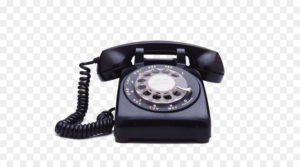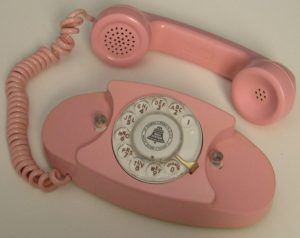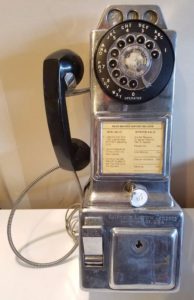
Try this experiment: tell your grandchild to dial a telephone number. Do you get a puzzled stare back?
Indeed, many of our grandchildren are oblivious to such telephone antiquities as cords, dial tones, answer machines (which are still newfangled things to many Boomers) and, of course, dials.
For many of us, a quantum leap in modern technology was the colored phone. Our parents grew up with (if they had phones at all) a black chunk of bakelite that weighed five pounds or more. It was leased from the phone company, and likely was manufactured by Western Electric, thanks to a sweetheart deal with Bell System. Actually, it wasn’t so much a sweetheart deal as a monopoly, since Bell and Western Electric were actually under the same corporate umbrella.
Indeed, for many years, it was a breach of Bell contract terms for a homeowner to plug any device into the phone line except for the leased brick phone that Ma Bell provided. Inspectors would check the lines for any devices that varied from the peculiar voltage requirements of WE’s phones, and any customer with the chutzpah to do such a thing would be threatened with disconnection.

My best friend’s sister had one of those pink Princess phones in the mid 1960’s. It was a nice act of generosity on the part of her parents, because it too was leased, and cost extra since it was (1) an extra phone, and (2) a fancy phone. Remember, back in those days, it was one basic phone per house, unless you wanted to shell out more bucks.
But this column is creeping a bit. It’s not about leasing phones, it’s about when dialing a phone number meant DIALING a phone number.
Push-button phones appeared as early as 1963 in urban areas, but since I (and many of you) grew up in small-town America, they really weren’t an option. No, that familiar clicking sound would count off each number dialed through the earpiece as the spring-loaded dial reliably did its job, with just the right amount of resistance to the finger as we patiently entered in five or seven numbers.
Some of the older phones, like the one my grandparents in Texas had, would have a strange silent spring-like resistance, and wouldn’t make the familiar dialing sound until your finger was released. I never could get used to that.

Bell continued to have a leased-phone-only policy throughout the 70’s. But prices must have dropped precipitously on colored phones, because I remember my thrifty parents sprang for a harvest gold model in the middle of that decade. It had a dial, of course. While touch-tone phones were available in northwest Arkansas in the mid 70’s, they cost extra, hence not in OUR house!
In 1983, the reorganized and split-up AT&T allowed consumers to connect their own phones to their network. That meant that suddenly K-Mart and the like began marketing extremely cheaply-made phones, in contrast to the massively rugged Western Electric models that we paid for many times over through leasing. And it was cheaper to make push-button phones than dial-up types, so the venerable dial began disappearing at that point.
No touch-tone service? no problem. The phones all had switches on them that would cause the pressed keys to make clicking sounds just like dialer phones, so you didn’t have to pay the extra five bucks or whatever a month to make them work.
Unlike many of the wonderful long-lost things we grew up with, dial-up phones can still be used with most phone companies. They have maintained backward compatibility so that you can dig out your mother’s avacado green bedside phone, affix the proper plug, and use it to dial out on the same wires that might be providing you with high-speed DSL service.
It’s nice when an occasional thing doesn’t change.